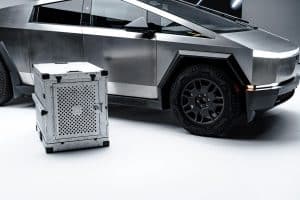Comparing Plug-In Hybrids and Full Electrics for Everyday Drivers
In recent years, the rise of electric vehicles has sparked a conversation about the future of transportation. With concerns about climate change and the depletion of non-renewable resources, many everyday drivers are now considering transitioning to a more sustainable mode of transportation. However, the debate between plug-in hybrids and full electrics continues to be a hot topic. Which one is better for everyday drivers? In this article, we will take a closer look at these two options and compare their features, benefits, and drawbacks to help you make an informed decision.
The Basics of Plug-In Hybrids
Plug-in hybrids, also known as PHEVs, combine the best of both worlds when it comes to fuel efficiency. They are similar to traditional hybrid vehicles in that they have a gasoline engine and an electric motor. However, what sets them apart is that they also have a larger battery pack that can be charged by plugging into an external power source.
Pros of Plug-In Hybrids
One of the main advantages of a plug-in hybrid is its versatility. It can operate on pure electricity for a specified range, and then switch to gasoline if needed. This allows for a longer driving range, making it more convenient for everyday drivers who may need to travel longer distances. Additionally, because they use both gasoline and electricity, they have a longer range than full electric vehicles.
Moreover, plug-in hybrids are cost-effective. They typically have a lower price tag compared to full electric vehicles, making them a more affordable option for many consumers. Plus, depending on your location, you may be eligible for government incentives and tax credits when purchasing a plug-in hybrid. This can further reduce the cost of owning one.
Cons of Plug-In Hybrids
Despite their advantages, plug-in hybrids also have drawbacks that everyday drivers should consider. One of the main drawbacks is that they still produce emissions while being driven on gasoline. This defeats the purpose of transitioning to a more sustainable mode of transportation. Additionally, they have a limited electric range, which means they will eventually need to rely on gasoline for longer trips.
Moreover, charging a plug-in hybrid can be a hassle for some drivers. It requires access to a power source, which may not always be available. Plus, the battery size of a plug-in hybrid is smaller than that of a full electric vehicle, meaning it may take longer to charge.
The Basics of Full Electric Vehicles
Full electric vehicles, also known as EVs, use only electricity to power their motor. They do not have a gasoline engine, so they do not produce any emissions. They are powered solely by large battery packs that can be charged by plugging into an external power source.
Pros of Full Electric Vehicles
One of the main benefits of full electric vehicles is their environmental impact. As mentioned earlier, they do not produce any emissions, making them a more sustainable option for everyday drivers. This can significantly reduce your carbon footprint and contribute to a cleaner and healthier planet.
In addition, full electric vehicles are more energy-efficient. All the electricity they use comes from the power grid, which can be powered by renewable sources, unlike gasoline-powered vehicles. This means you are saving money and reducing your reliance on non-renewable resources.
Cons of Full Electric Vehicles
Although full electric vehicles have many benefits, they also come with some drawbacks. One of the main cons is their limited driving range. Most full electric vehicles can only travel about 200-300 miles on a single charge, which can be a challenge for everyday drivers who need to travel long distances.
Moreover, the initial cost of purchasing a full electric vehicle is usually higher compared to plug-in hybrids or traditional gasoline-powered vehicles. While this cost may be offset by long-term savings on fuel, it can still be a barrier for some drivers.
So Which One is Better for Everyday Drivers?
Ultimately, the answer to this question depends on your personal needs and preferences. If you drive long distances frequently and need access to gasoline, a plug-in hybrid may be the better option for you. However, if you have a shorter commute and are looking for a more sustainable mode of transportation, a full electric vehicle may be a better fit.
It’s important to do your research and carefully consider the features and drawbacks of each option before making a decision. Additionally, factors such as the availability of charging stations in your area and government incentives may also impact your decision.
In conclusion, both plug-in hybrids and full electric vehicles have their advantages and disadvantages. It’s up to you to weigh these factors and determine which one aligns with your lifestyle, budget, and sustainability goals. Whichever option you choose, know that you are making a positive impact on the environment by transitioning to a more sustainable mode of transportation.










